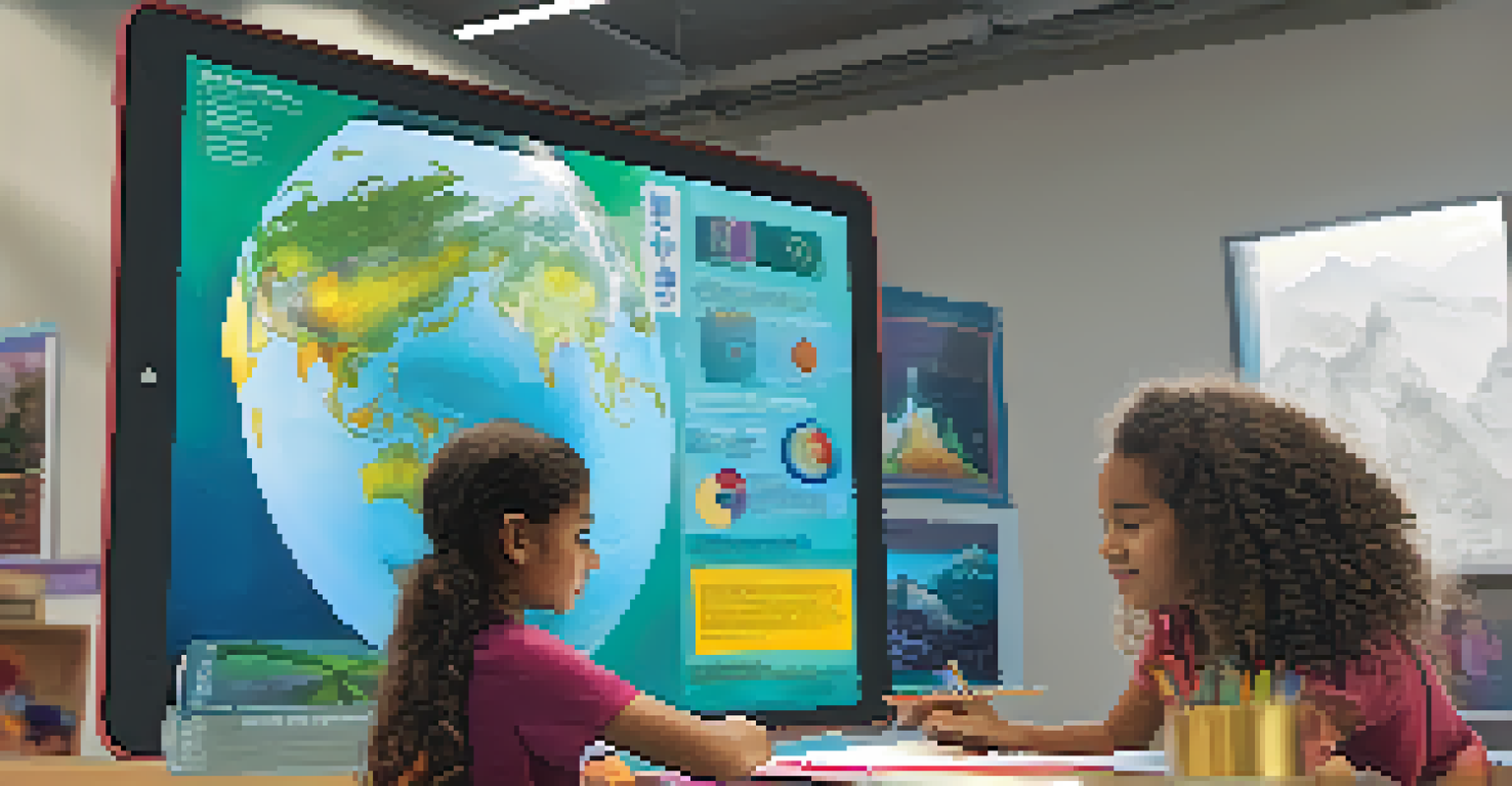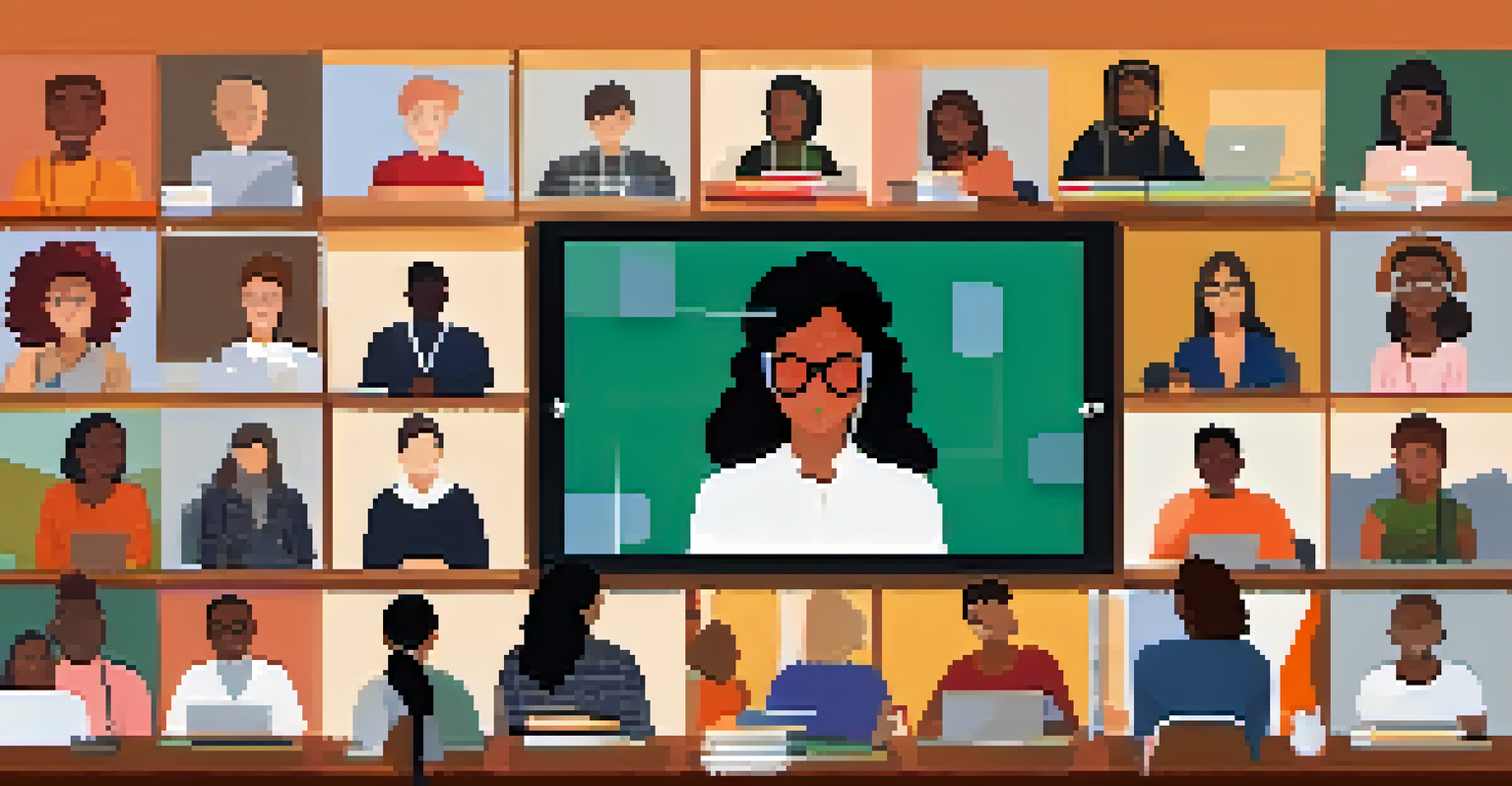Fostering Collaboration through Transmedia Learning Platforms

Understanding Transmedia Learning Platforms
Transmedia learning platforms are innovative educational tools that utilize multiple media channels to convey information. Imagine a story unfolding across books, websites, videos, and social media, all interconnected to enrich the learning experience. This approach not only engages learners but also encourages them to explore content in various formats, catering to different learning styles.
Collaboration allows us to know more than we are capable of knowing by ourselves.
By utilizing diverse platforms, educators can create a more immersive environment. For example, a history lesson might include a documentary film, an interactive timeline on a website, and discussions on social media to foster deeper understanding. This variety keeps students engaged and allows for a richer exploration of the subject matter.
Ultimately, transmedia learning platforms promote active participation. Instead of passively absorbing information, learners are invited to interact with content, share insights, and collaborate with peers, building a community of knowledge seekers.
The Role of Collaboration in Learning
Collaboration is at the heart of effective learning. When students work together, they not only share knowledge but also develop essential skills such as communication, critical thinking, and problem-solving. Think of a group project where each member contributes unique insights, leading to a more comprehensive understanding of the topic.

In transmedia learning, collaboration is seamlessly integrated into the experience. For instance, students might engage in discussions on a forum while simultaneously creating a group video project. This kind of multi-faceted collaboration enhances the learning process by allowing learners to take ownership of their education.
Engagement through Diverse Media
Transmedia learning enhances student engagement by presenting information in various formats, catering to different learning styles.
Moreover, collaborative environments foster a sense of community. Students feel connected to their peers, which can enhance motivation and participation. When learners collaborate, they're more likely to support one another and celebrate collective achievements, creating a positive learning atmosphere.
Enhancing Engagement through Diverse Media
One of the standout features of transmedia learning is its ability to enhance engagement through diverse media formats. When students encounter information in various forms—such as podcasts, infographics, or interactive games—they're more likely to stay interested. This engagement leads to deeper learning and retention of information.
The more we learn, the more we realize that we don't know. The more we collaborate, the more we grow.
For instance, consider a science lesson on climate change presented through videos, articles, and interactive simulations. Students can visualize data, understand complex concepts, and even participate in virtual experiments. This hands-on approach keeps learners invested in the subject matter and encourages exploration beyond the classroom.
Incorporating different media also allows educators to reach a wider audience. Not all students learn the same way, and some may find traditional lectures less effective. By embracing diverse formats, educators can cater to different preferences, ensuring that all learners have the opportunity to thrive.
Creating a Supportive Learning Community
Building a supportive learning community is crucial for effective collaboration. Transmedia platforms offer opportunities for learners to connect, share, and provide feedback. This sense of belonging can be especially empowering for students, as they realize that their contributions matter.
For example, online discussion boards or social media groups can serve as spaces for students to share ideas and ask questions. When learners feel comfortable expressing themselves, they're more likely to engage deeply with the material and with each other. This dynamic contributes to a vibrant learning culture.
Collaboration Fosters Community
Collaboration within transmedia platforms not only enriches the learning experience but also builds a supportive community among learners.
Additionally, fostering a supportive environment encourages risk-taking and innovation. Students who feel safe to voice their thoughts are more likely to experiment with new ideas and approaches. In turn, this can lead to creative solutions and a richer learning experience.
Facilitating Peer Feedback and Reflection
Peer feedback is a vital component of collaborative learning. Through transmedia platforms, students can easily share their work, receive constructive criticism, and reflect on their learning. This process not only enhances individual understanding but also promotes a culture of continuous improvement.
For instance, learners might upload their projects to a shared digital space where peers can comment and suggest enhancements. This exchange of ideas fosters deeper engagement and critical thinking, as students evaluate each other's work and provide valuable insights. It’s like having a workshop where everyone contributes to each other's growth.
Moreover, reflection is key to solidifying learning. After receiving feedback, students can take time to consider how they can improve. This combination of collaboration and reflection creates a cycle of learning that empowers students to take charge of their educational journey.
Utilizing Technology to Enhance Collaboration
Technology plays a pivotal role in fostering collaboration within transmedia learning platforms. Tools like video conferencing, collaborative documents, and project management apps make it easier for students to work together, regardless of their physical location. This opens up a world of possibilities for diverse, global collaboration.
For example, students from different countries can collaborate on a project using shared documents and virtual meetings. They can exchange ideas in real time, bringing unique perspectives to their work. This not only enriches the project but also promotes cultural understanding and communication skills.
Technology Enhances Collaboration
Utilizing technology in transmedia learning facilitates collaboration across distances, making it easier for students to work together and share ideas.
Additionally, technology allows for asynchronous collaboration, meaning students can contribute at their own pace. This flexibility accommodates varying schedules and learning styles, ensuring that everyone has a chance to participate fully. In essence, technology transforms collaboration from a logistical challenge into an exciting opportunity.
Measuring the Impact of Transmedia Learning
To truly understand the effectiveness of transmedia learning platforms, it's essential to measure their impact on student outcomes. Educators can utilize assessments, surveys, and observations to gauge how collaboration influences learning. This data can provide valuable insights into the strengths and areas for improvement within the platform.
For instance, pre-and post-assessments can reveal how collaborative activities enhance understanding of complex concepts. Feedback from students about their experiences can also guide future improvements. By actively seeking input, educators can ensure that the platforms remain responsive to learners' needs.

Ultimately, measuring impact is about fostering a cycle of growth. Continuous evaluation allows educators to refine their approaches, ensuring that the transmedia learning experience remains engaging and effective. This commitment to improvement is key to sustaining a vibrant learning community.